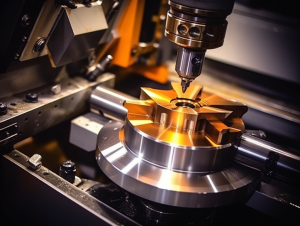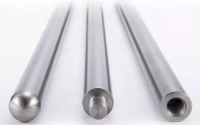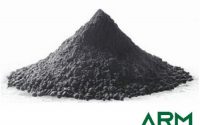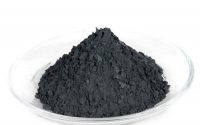A Comprehensive Guide to Machining Molybdenum
Introduction
Molybdenum is a versatile metal widely used in industries such as aerospace, automotive, and electronics due to its exceptional properties. However, machining molybdenum can be a complex task due to its unique characteristics. This article aims to provide a comprehensive guide to machining molybdenum, covering techniques, challenges, and best practices for achieving optimal results.
Understanding Molybdenum
Molybdenum, with its high melting point and excellent mechanical properties, offers unparalleled strength, heat resistance, and corrosion resistance. These qualities make it an ideal choice for a range of applications. However, these same characteristics present challenges in the machining process. Therefore, it is crucial to understand the properties of molybdenum before diving into machining techniques.

Machining Techniques
Milling, turning, and drilling are the primary machining techniques used for molybdenum. However, due to its high hardness and brittleness, special considerations must be taken. When milling, using carbide or polycrystalline diamond (PCD) tools with minimal rake angle and low cutting speeds is recommended. For turning, using sharp cutting tools made of high-speed steel or cubic boron nitride (CBN) is essential. Drilling molybdenum requires proper feeds and speeds, along with the use of specialized drill bits with a split-point design to prevent chipping.
Challenges and Solutions
Molybdenum presents several challenges during the machining process. Its high hardness can lead to tool wear and breakage. To overcome this, employing effective cooling and lubrication is vital to reduce heat buildup and prolong tool life. Moreover, molybdenum’s brittleness can result in chip formation difficulties. Proper chip control techniques, such as using low feed rates and cutting depths, can mitigate this issue.
Best Practices
To achieve optimal results when machining molybdenum, adherence to best practices is crucial. Firstly, maintaining a stable and rigid setup with minimal vibrations is essential to avoid tool deflection and improve surface finish. Secondly, employing adequate cooling and lubrication is necessary to prevent overheating and reduce friction. Lastly, frequent tool inspections and replacements are recommended to ensure consistent machining quality.
Conclusion
Machining molybdenum requires careful consideration of its unique properties and challenges. By understanding the right techniques and implementing best practices, manufacturers can overcome these hurdles and achieve superior results. It is essential to stay updated with the latest advancements in cutting tools and machining strategies to optimize the machining process for molybdenum components.
For more information about molybdenum products, please visit https://www.samaterials.com/.



